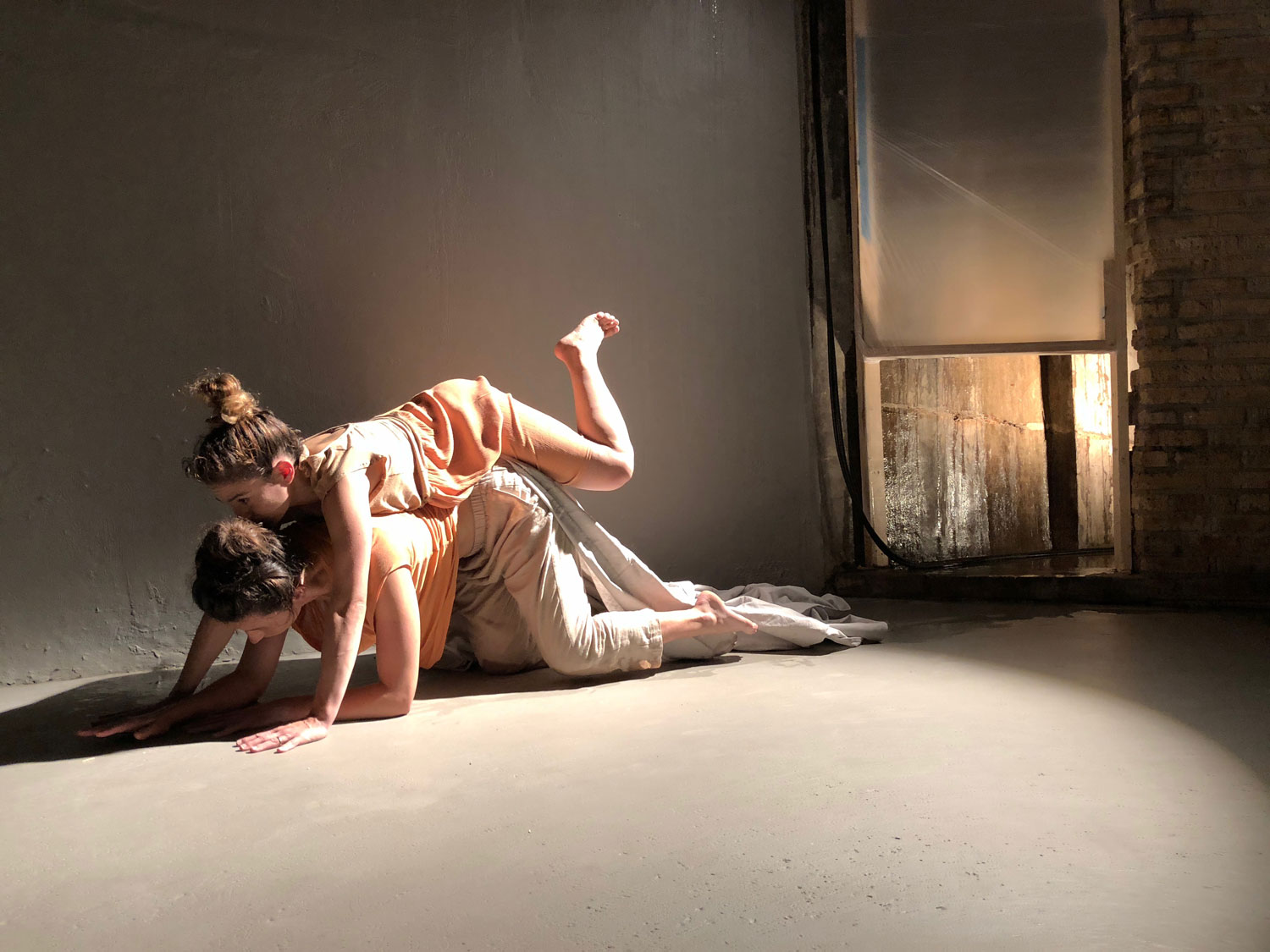
Dropshift Dance, photo by Nadia Oussenko
Feb 11, 2019 | By Brianna Alexis Heath
What does it mean to be in close-proximity to another person? To be of the community and to exist as an individual? What roles do artists play in the reactivation of forgotten spaces, and how do we reclaim these spaces for imagination and play that speaks to our culture and personal contexts? These are some of the questions I think about as I watch Emma Draves and Andrea Cerniglia rehearse developing works for their shared concert, “SNUG,” Feb. 15-16, at 4251 N. Lincoln Ave. The concert—bringing together Cerniglia, the artistic director of Dropshift Dance, and Draves, an independent dance-artist and educator—will be shown in an empty storefront, turned gallery-styled performance setting in which audience members will be able to take advantage of different viewing and seating options during the performance.
According to a press release, Draves’ work, “The Quiet Hours,” delves into “themes of independence and interdependence, tracking how we comfort ourselves in the ‘quiet hours’ and when we reach out for community;” while Cerniglia’s work, “At Our Edges,” “explores an adaptable physical state and our connection to the natural world and its processes of life and death.” Watching each of the works in rehearsal, I am drawn to the use of suspension, each of the ensembles’ embodiment of gravity, their intentional listening to the body that is both external and internal. Draves and Cerniglia—both with backgrounds in Laban Movement Analysis—encourage their dancers to make choices within a sketch in response to their environment, and in awareness to other bodies in the space that provides a supportive frame for exploration and a sharing of energies for both performer and audience member.
When speaking of the work, Cerniglia states, “I am always interested in building something full [of] image, something that has enough open space for the viewer to find their own way in…I am interested in the audience-performer relationship, what that dynamic can be, and how we, as artists, can set it up for people to feel safe, but also [empower them] to make choices and be inside of the work, or on the edge of the work.”
 Emma Draves, photo by William Frederking In reference to the title of the concert, “SNUG”, Draves remarks, “I think about first-thing in the morning where I am still connected to humanity on the street, but I am still in this protected thing [where] I feel most safe and exhilarated. I think I am always interested in the actual people…I just want the actual people to be inside and not just dancer-bodies. There is hegemony in that which I am uncomfortable with given our current state.”
Emma Draves, photo by William Frederking In reference to the title of the concert, “SNUG”, Draves remarks, “I think about first-thing in the morning where I am still connected to humanity on the street, but I am still in this protected thing [where] I feel most safe and exhilarated. I think I am always interested in the actual people…I just want the actual people to be inside and not just dancer-bodies. There is hegemony in that which I am uncomfortable with given our current state.”
Even though the work will be performed in a non-traditional space, Draves and Cerniglia rehearse with their ensembles in traditional dance studios. However, there is certain level of anticipation and preparation building in each rehearsal for what will happen when the dancers and audience members enter the storefront. This is what excites me about the work: the potential for new things to emerge that may not have surfaced in the studio, the possibility for new variables to be introduced in each lift and jump, the risk of coming in direct contact with an audience member, and the idea of what will happen to the physical space when it is all over—the reverberation, the residue and the memory of what was.
Each of these works are smaller iterations of longer works that will premiere later in May. Cerniglia, who is currently working with several collaborators including filmmaker Nadia Oussenko, is excited to bring in community movement as a way “to impact the physicality of viewers…with a sense of weight and breath to impact their [space] as they watch and experience [the dancers],” she says.
Draves—whose work is, in a sense, a continuation of her research in her 2018 Set Free residency at Links Hall—is curious to see how she can push the individual within unison moments, using the importance and focus and touch to care for, and see the individual. The luscious moments of surrender to gravity—and to the collective—in each of the works that is lovely to watch. Draves’ sustained and circular movements that extend time, and Cerniglia’s playful energy shifts provide space for organic and human synergies where audience members can feel safe to indulge in the quiet, as well as the visceral moments.
—
Disclosure: The author was a performer for Emma Draves’ 2018 Set Free residency at Links Hall
